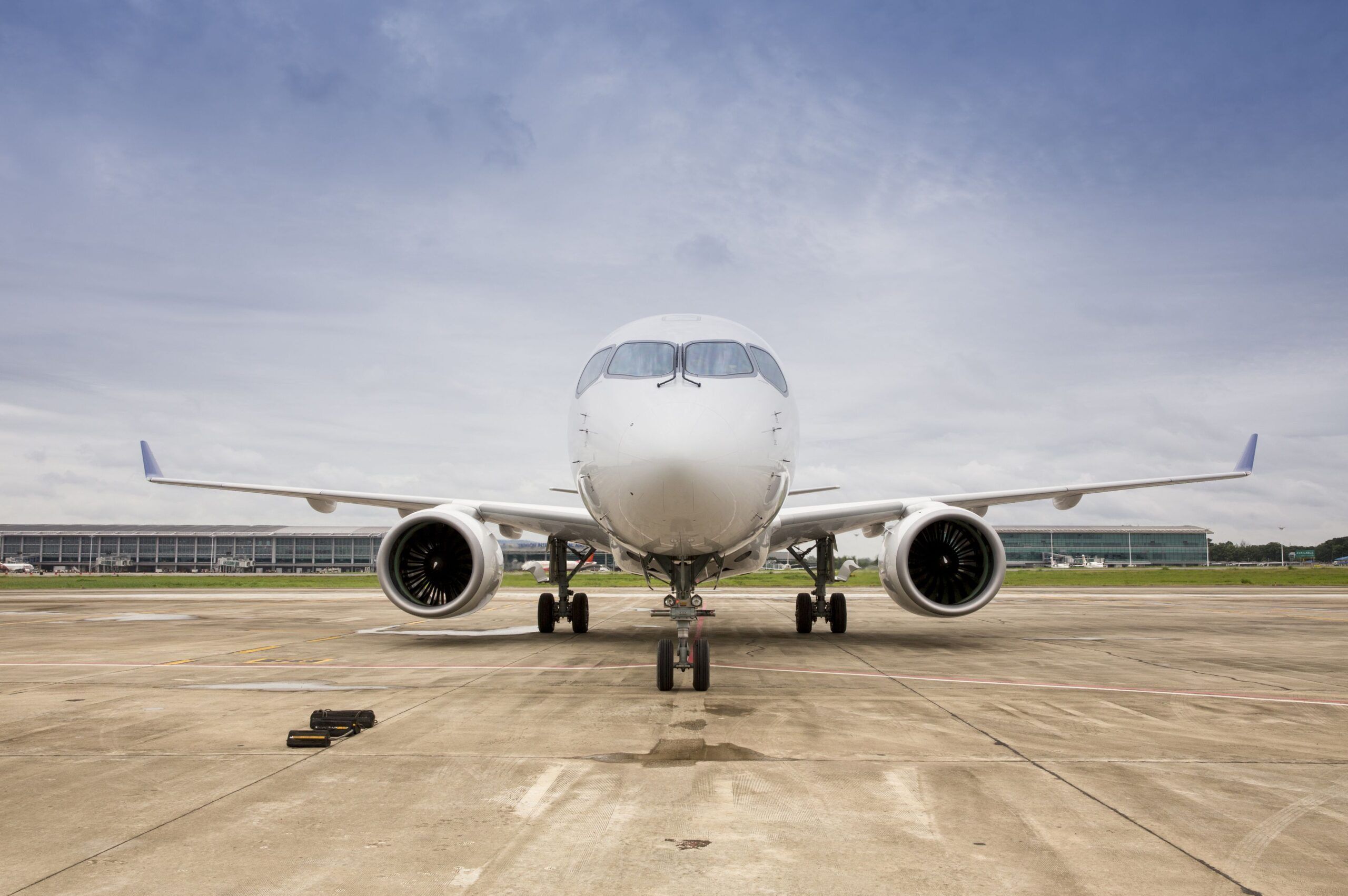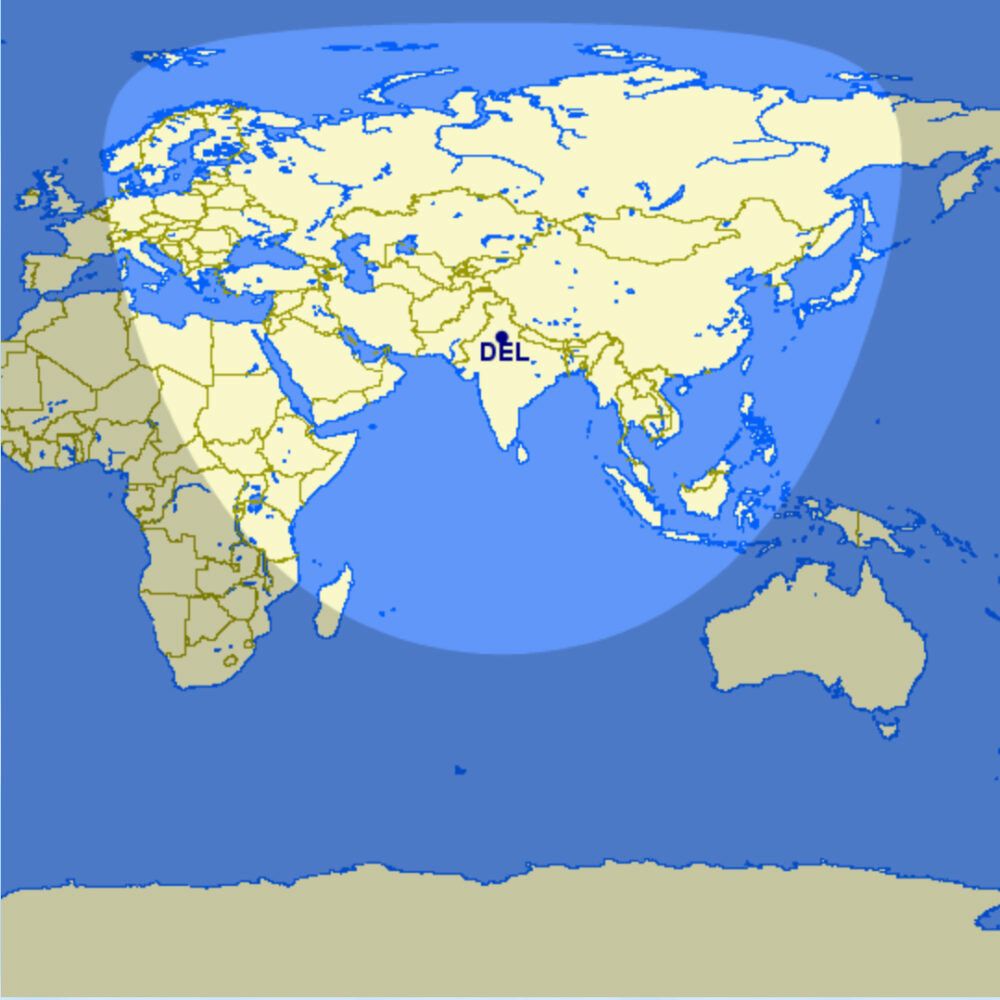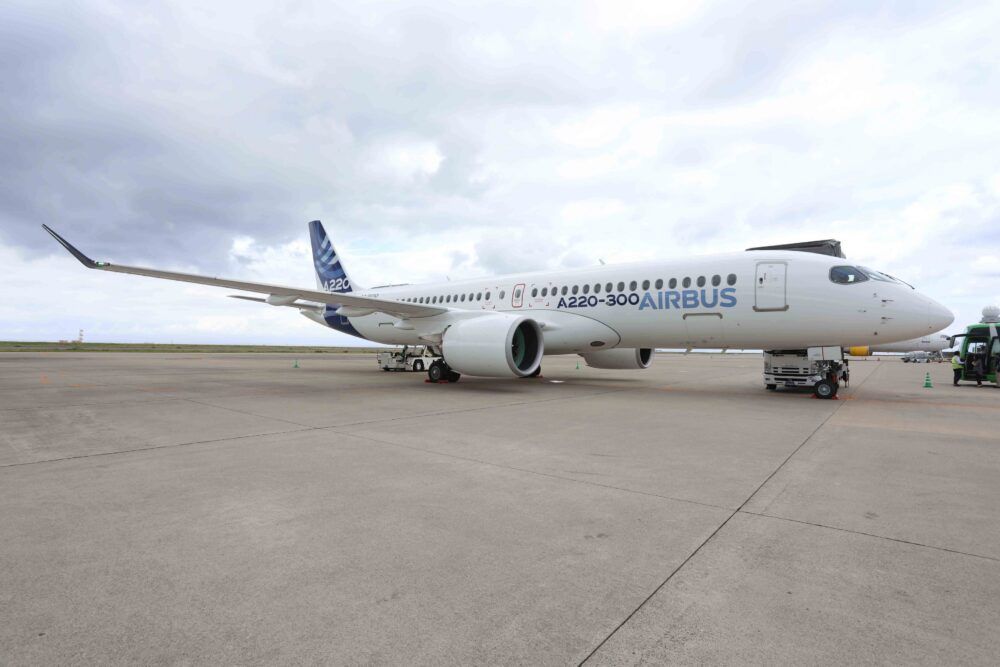While India has a quickly growing fleet of aircraft, there is an absence of one type of plane: regional jets. No major Indian carrier currently operates regional jets like the Airbus A220 or Embraer E190. But there could be an untapped market for the A220 in India in the future. Here’s why the A220 could be perfect for the Indian market.
Sweet spot
The Airbus A220 family offers a unique mix of features from both regional and narrowbody planes, giving a long range with exceptional efficiency and long fuselage.
For example, the smaller A220-100 can seat 100-120 passengers in a two-class layout and has a range of 3,450 nautical miles. The larger A220-300 can hold anywhere from 120 to 160 passengers in a two-class layout and a slightly lower range of 3,400 nautical miles.
Putting this into context for the Indian market, here’s a map of where the A220-300 could fly from the capital of Delhi. We can see that route across India, Middle East, Europe, and parts of East Africa are well within reach. More importantly, the efficiency and capacity of the A220 mean thinner demand routes will be much more feasible.
Routes like Delhi to Addis Ababa, Seoul, Vienna, Munich, Jakarta are all within reach of the A220. Currently, all-European routes from India operate with large widebodies like the Boeing 787 or 777. The entry of the A220 could make leisure routes like Delhi-Athens sustainable for airlines and spur more routes.
Speaking about the opportunities with the A220, former COO of Vistara and SpiceJet and Alton senior advisor Sanjiv Kapoor told Simple Flying in an interview,
“Long and thin aircraft like the Airbus A220 and Embraer E2 series, which have 120 to 140 seats and can do four to six hour long flights, those kind of aircraft have the potential for short-haul, hub bypass, and to fly unserved long and thin markets. Routes like India to Cairo and Athens which do not have nonstop services due to the current widebody and narrowbodies available could be well served by a 120-seater jet.”
More
While the A220 offers many international opportunities, its advantage remains as a regional jet for now. This would apply to India too, which expects to see a huge boom in domestic traffic over the next two decades.
For airlines, the A220 seating capacity is the perfect midpoint between the larger 737/A320 and smaller Dash 8s or ATR 72s. The 120-seat jet would allow airlines to slowly grow regional routes as demand picks up. On many routes, the A220 will simply offer optimal capacity.
No Indian airline has currently ordered or signaled that they are considering the A220 for their fleets. However, as the plane becomes more popular around the world, its advantages for the Indian market are quickly becoming prominent.
What do you think about the A220 flying with Indian airlines? Let us know in the comments!



